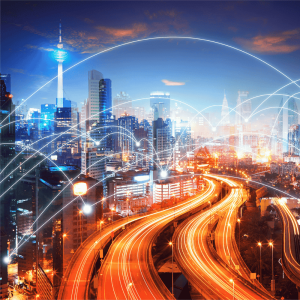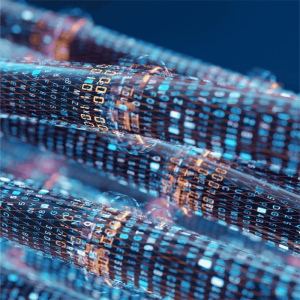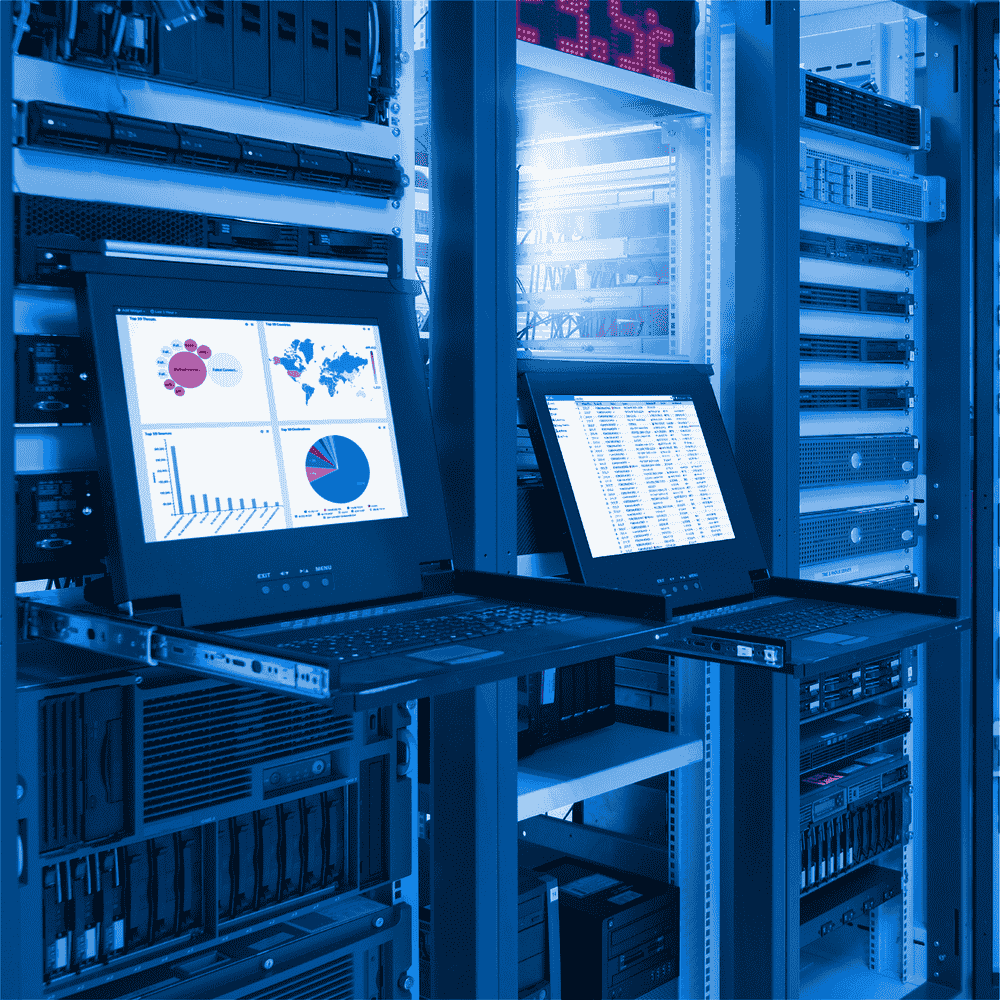Internet of the Future: Possible with Fiber Optics
The internet has become an indispensable part of modern life. There is hardly a day we spend without being connected to the digital world at home, at work, in education and entertainment. However, the need for speed and capacity offered by the internet is increasing day by day. Data-intensive applications such as online games, video conferences, 4K and 8K video streams put a great burden on existing internet infrastructures. This is where fiber optic technology comes into play. The internet of the future is made possible by fiber optic cables. So how does fiber optic technology shape the internet of the future?
What is Fiber Optics?
Fiber optic is a technology infrastructure consisting of thin glass or plastic fibers that carry data at the speed of light. Compared to traditional copper cables, fiber optic cables have much more data carrying capacity and do not experience signal loss even over long distances. Thanks to these features, fiber optic forms the basis of the modern internet infrastructure.
Contributions of Fiber Optic Technology to the Internet of the Future
1. Extraordinary Speed
In the future, internet speeds are expected to reach not only a few megabits, but also gigabits and even terabits. Fiber optic cables are currently the fastest internet technology available, enabling speeds of up to 1 Gbps (gigabit per second). This speed means watching high-resolution videos instantly, downloading large files in seconds, and working more efficiently on the cloud. The internet of the future will be supported by these speeds, and fiber optic cables will be at the forefront of this revolution.
2. Lower Latency
Not only speed but also latency is very important in internet connections. Low latency plays a critical role in applications that require instant data transfer, especially online games, virtual reality, and autonomous vehicles. Fiber optic cables provide maximum speed and precision in data transmission with almost zero latency. This means that in the future, users will be able to access more realistic virtual experiences, secure autonomous vehicles, and instantly responsive systems without experiencing any delays.
3. Big Data and the Internet of Things (IoT)
In the future, billions of devices will be connected to each other in the Internet of Things (IoT) ecosystem. Smart cities, homes, industrial systems and healthcare devices will constantly generate data and share it instantly. In order for IoT to realize its full potential, a robust, fast and reliable infrastructure is required. Fiber optics can seamlessly carry large data streams thanks to its wide bandwidth and provide the secure and fast connection that IoT devices need. In this way, energy-efficient smart cities, optimized production processes and more effective healthcare services will become possible.
4. Cloud Technologies and Efficiency
In the future, more businesses and individuals will turn to cloud-based services. Everything from file storage to applications will be accessible via the cloud. Fiber optic infrastructure will increase efficiency in the business world by providing fast and uninterrupted access to cloud services. In addition, real-time data sharing and collaboration will be possible even from remote locations. The fundamental building block of the future business world will be fiber optic-supported cloud technologies.
5. 5G and Fiber Optic Compatibility
5G technology offers a revolutionary innovation in the world of mobile internet. However, the ultra-high speeds and low latency offered by 5G require a strong infrastructure. Fiber optics form the basis of this infrastructure by connecting 5G base stations. In the future, mobile internet users will be able to experience the incredible speeds offered by 5G thanks to fiber optic networks. This means that the internet can be used anywhere, at any time, without interruption and at high speed.
Energy Efficiency and Sustainability of Fiber Optics
The internet infrastructure of the future is of great importance not only in terms of speed and capacity, but also in terms of sustainability. Fiber optic cables consume much less energy compared to copper cables. Since they transmit data using light signals, their electricity consumption is quite low. In addition, fiber optic cables are more durable and their maintenance requirements are minimal. This reduces energy consumption, minimizes environmental impacts and provides a more sustainable internet infrastructure.
The Internet of the Future with Fiber Optics: A Turning Point
Fiber optic technology plays a critical role in accelerating, expanding and making internet infrastructure more reliable. The internet of the future will not only be fast, but also more accessible, secure and sustainable than ever before. Smart cities, autonomous vehicles, artificial intelligence, virtual reality and more will become possible thanks to fiber optic infrastructures. Countries and companies that invest in fiber optic technology today will be pioneers of the digital economy of the future.
Conclusion
Fiber optic cables are the cornerstone of the technology that makes the internet of the future possible. With its advantages such as light-speed data transmission, low latency, high reliability and energy efficiency, fiber optics form the backbone of digital transformation. As we step into the more connected, smarter and faster world that awaits us in the future, fiber optic technology will continue to be the most important element of this revolution.
What is Quantum Communication?
Quantum communication means the transmission of data based on the principles of quantum mechanics. In traditional communication methods, data is transferred via digital signals consisting of zeros and ones. However, in quantum communication, quantum bits (qubits) are used. These qubits are in a superposition state where they can be both zero and one at the same time. In this way, quantum communication has a much higher information carrying capacity and superior security opportunities.
Fiber Optics and Quantum Communication: Why is it Important?
In order to realize the potential of quantum communication, data must be transferred quickly and without loss. Traditional copper cables or radio waves are insufficient for this high-precision communication. This is where fiber optic cables come into play as the main component of the quantum communication infrastructure. Fiber optic cables provide an ideal environment for quantum communication with their light-speed data transmission and resistance to external interference.
The Role of Fiber Optic Cables in Quantum Communication
1. Secure Data Transmission
Quantum communication offers a revolutionary innovation in terms of security. Thanks to the method called quantum key distribution (QKD), data is transmitted via quantum encryption, and this encryption becomes almost impossible to eavesdrop. Fiber optic cables are the best infrastructure to provide this secure data transmission. Because fiber optic cables are resistant to electromagnetic interference and ensure uninterrupted transmission of signals.
2. Low-Loss Transmission
In quantum communication, it is extremely important that there is no signal loss during the transportation of qubits. Fiber optic cables have a structure that can transmit light with low loss. This allows quantum signals to be carried without loss even over long distances. Photons used in quantum communication can reach their destination reliably via fiber optic cables.
3. Long-Distance Quantum Communication
One of the biggest challenges of quantum communication systems is the transmission of data over long distances. However, fiber optic cables have the capacity to overcome this problem. Especially with the help of quantum repeaters, long-distance quantum communication becomes possible over fiber optic cables. Quantum repeaters enable the renewal and strengthening of signals over distances, allowing quantum communication networks to be established in larger areas.
Quantum Internet: The Future with Fiber Optics
Quantum communication will not be limited to secure data transfer. In the future, it will form the basis of a new digital ecosystem called the quantum internet. The quantum internet will go beyond the classical internet and create a much faster and more secure data sharing network. Fiber optic cables will form the backbone of this quantum internet and will connect quantum networks worldwide.
The possibilities offered by the quantum internet include highly secure communication in the banking and finance sector, big data analysis in scientific research, and revolutionary speed increases in artificial intelligence applications. The implementation of these developments will be possible thanks to the high speed, low loss, and reliability offered by fiber optic cables.
Areas Where Fiber Optic and Quantum Communication Meet
1. Secure Financial Transactions
Quantum communication can enable financial data and digital transactions to be carried out under high-level security. Banks and financial institutions can securely transmit their data over fiber optic cables with a quantum communication infrastructure. In this way, a much stronger line of defense can be created against cyber attacks.
2. Scientific Research and Big Data
Quantum communication opens new doors for big data analysis and scientific research. These systems, especially those integrated with quantum computers, can start a new era in scientific discoveries by providing fast and secure data transfer thanks to fiber optic cables.
3. Government and Military Communications
Data security is of critical importance for governments and military units. Quantum communication and fiber optic infrastructure can provide strong protection against leaks and data theft in these areas. Secure communication lines can be provided with quantum communication for national security.
Conclusion: The Revolution of Quantum Communication with Fiber Optic
Quantum communication offers a revolutionary technology in terms of data security and speed. However, a solid infrastructure is needed for this technology to be fully utilized. Fiber optic cables provide an ideal infrastructure for quantum communication, providing low-loss, reliable and long-distance data transmission. With the development of the quantum internet in the future, the role of fiber optic technology in this revolution will grow even more.
The combination of fiber optic and quantum communication opens the door to major changes in terms of speed, security and efficiency in the digital world of the future. These technologies will come together to offer groundbreaking innovations in scientific research, financial transactions, national security and many other areas.






